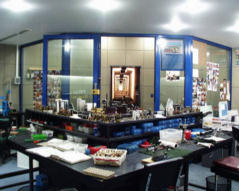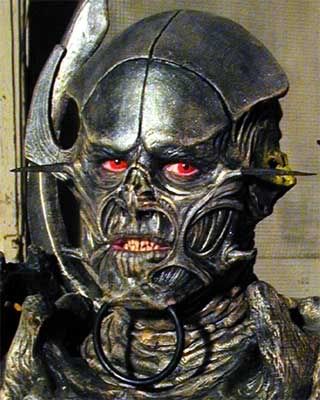

 The Accurate Reloading Forums
The Accurate Reloading Forums  THE ACCURATE RELOADING.COM FORUMS
THE ACCURATE RELOADING.COM FORUMS  Guns, Politics, Gunsmithing & Reloading
Guns, Politics, Gunsmithing & Reloading  Reloading
Reloading  Runnout guage
Runnout guageGo  | New  | Find  | Notify  | Tools  | Reply  |  |
| One of Us |
If a guys not turning necks, does he still need a runnout guage? My guess would be that it never hurts to measure them, IF you have the time to commit to it. But then that raises another question, if you not getting the bullets in there straight and true, is it a problem with the necks or is it a seater issue? I'm in the process of updating my RCBS standard seating dies with Redding micrometer units and even though I'm not sure if I've got a problem with runnout, I feel better with these deluxe dies. | ||
|
| one of us |
There are several different things that can create runout. Most often they involve the expander. Experimenting with a runout guage will help you diagnose what is causing runout in your loads. I think they are worth investing in........................DJ ....Remember that this is all supposed to be for fun!.................. | |||
|
| One of Us |
Anybody else have any feedback? | |||
|
one of us |
While I don't have any rifles that would be considered benchrest quality or any that require neck turning, I do Have a few that would be considered accurate. In my experience a concentricity gauge, in my case a Sinclair, has been most helpful. First, it allows you to trouble shoot problems with your setup. I wound up replacing most of my RCBS sizeing dies with Forster brand. That immdeiately solved most of my "expander " problems. Segregating finished loads by runout has ,at least in my experience, improved groups from the bench. I will add a big YMMV. If you buy a Sinclair unit, Sinclair also makes a case neck wall thickness gauge that uses the dial gauge of the concentricity unit. Varying case wall thickness causes many runout issues that can't be fixed properly. Lapua is the only cure for that problem. Glenn Zidecker wrote an excellent book on the fine points of reloading called Reloading for Competition. If you can stand his writing style, which causes some folks eyes to cross, there is much valuable information and ideas to consider as your skills improve. Any way, I have found a runout gauge to be vwery helpful. Covey16 Funny,After a rotten war like this,how hard it is to leave- Duncan Grinell-Milne | |||
|
| one of us |
I'm with Covey. I use the concentricity gauge to establish the quality of my loading process - e.g. per caliber/die set sizing as well as seating operation. I don't measure every round I size or seat bullets in, once I have a reasonable idea that my setup is good. If I'm looking to get the most out of a round, I'll sort brass with the neck wall variation gauge. I'm not the best ever reloader or shooter, but with a few simple tools, I'm usually able to get good results. - mike ********************* The rifle is a noble weapon... It entices its bearer into primeval forests, into mountains and deserts untenanted by man. - Horace Kephart | |||
|
| One of Us |
I have a homemade runout guage using a caliper that works. I started using it to sort and check my ammo prior to going to the field to test rounds, that way I use the off center ones to foul the barrel. I just started using it though. I think it can be beneficial, but to be honest, I was getting a little frustrated with it. One more problem to tackle. It was because of the guage that I realized my old POS RCBS seating die was damaged and I just got a new Redding Comp seating die. So in a way, my runout guage cost me another $90 | |||
|
| One of Us |
Covey, I got that very book for Christmas and its very informative. I to am in the process of upgrading my loading dies with Redding or Forrester. I've already bought some Redding competition seating dies but have yet to use them. The sizing dies will be next on my list. Thanks for the info guys, keep it coming | |||
|
one of us |
CobraJet Sounds like your on the right track, now you can spend the rest of your life perfecting your skills like the rest of us. PS Even Redding dies can be set up wrong. Good luck Covey16 Funny,After a rotten war like this,how hard it is to leave- Duncan Grinell-Milne | |||
|
| One of Us |
Buy (or better yet, borrow) the gauge first. I wish that I would have! I found out that my RCBS seater die was seating bullets very straight AFTER I bought the expensive Redding Comp die. Also found out that my RCBS neck die introduced less runout than my Redding bushing neck die. Sometimes, you just get lucky! | |||
|
One of Us |
Absolutely not!!! I've been reloading for 40+ years and haven't used one yet.....and I believe I can still outshoot most others here on a prairiedog town any day of the week! Forget about the runout and hone your shooting skills......you'll be dogs ahead and better off /////////////////////////////////////////////////////////////////////////// "Socialism is a philosophy of failure, the creed of ignorance, and the gospel of envy, its inherent virtue is the equal sharing of misery." Winston Churchill | |||
|
| one of us |
Mine has been very helpful over the years. I use it mainly for checking neck turning operations, and segregating lots of newly aquired brass. Maybe the pic will work..... Kevin [IMG:left]http://outcast.homeunix.org/uploads/R-OSet-up6PPCNormaUSA.jpg [/IMG] | |||
|
one of us |
There are a great number of shooters in this world that want all the points or critters that their ability to hold a rifle allows. Few are so good that they can't benefit from the best possible ammo . David Tubb doesn't shoot Winchester White box ammo. Covey16 Funny,After a rotten war like this,how hard it is to leave- Duncan Grinell-Milne | |||
|
| one of us |
If you have a very smooth flat table and use a relatively long bullet you can actually see the run out of a bad round by rolling the rounds slowly across the table. Between about 60 and 200 rpm I can see .003 off center pretty easily. That is a total of .006 wobble at the bullet's tip also known as TIR for total indicated run out. You will need a light colored table or a color that contrast well with the bullet if you are color blind. I learned this from spending about 10,000 hours running an engine lathe. I had a new .25/06 that would not shoot better than 1.5" groups. I noticed the bullets had a lot of run out and chucked the seater in a new lathe chuck. The seater stem had about .015 run out to the threads. That is .030 TIR to the eye. That much is about as easy to see as the wobble in a jump rope. I called the die manufacturer. They said send the entire die set back with some brass and bullets. I got all my components back and a new die set with basically no run out. The .25/06 shot much better immediately. Even though it now has a scorched throat it still shoots around 5/8" groups. Needless to say I am still using that brand of dies 33 years later. | |||
|
| Powered by Social Strata |
| Please Wait. Your request is being processed... |
|

Visit our on-line store for AR Memorabilia

